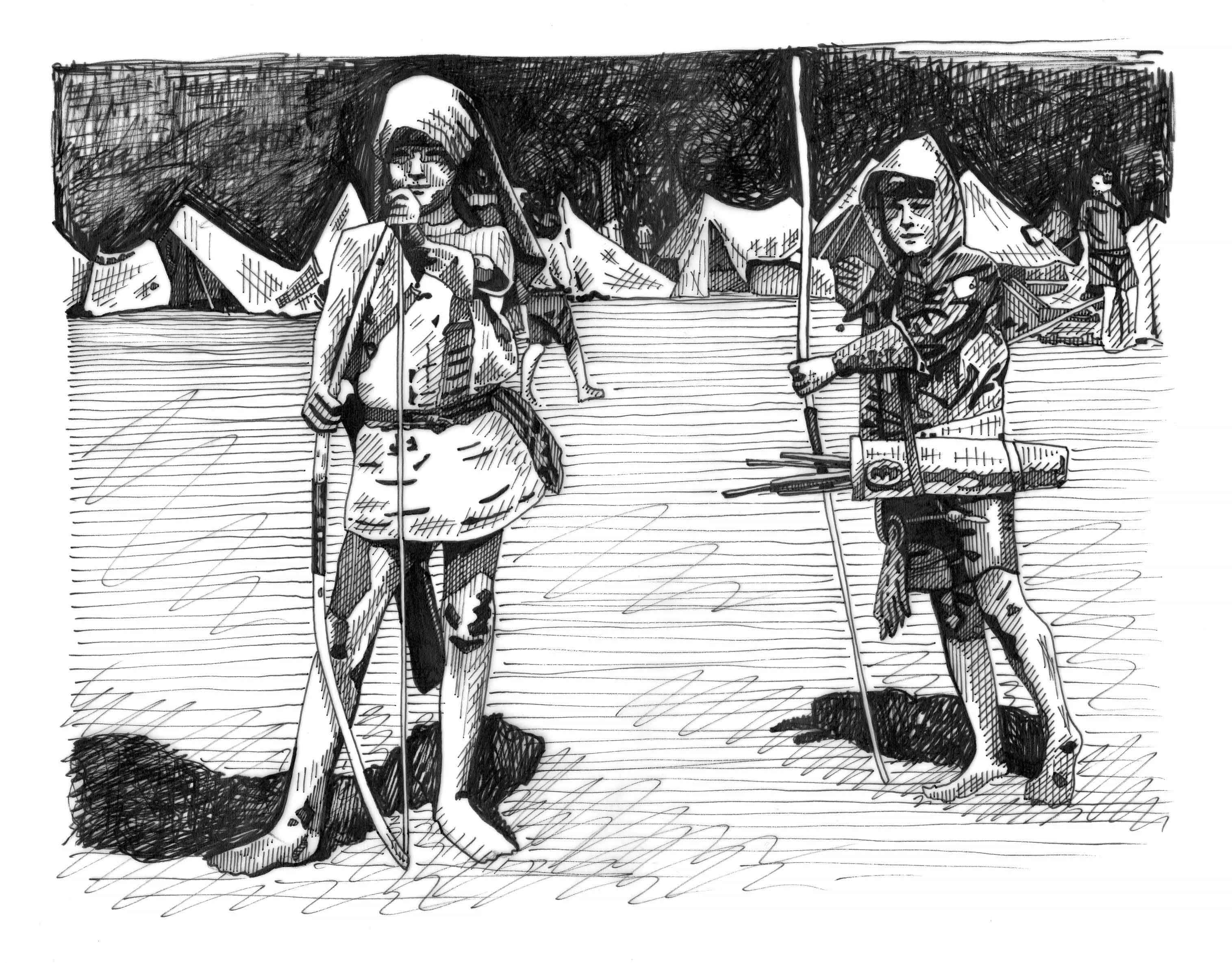Machine Shall be the Slave of Man but We Will Not Slave for the Machine
mixed-media installation, ‘Altermodern’: Tate Triennial, Tate Britain, 2009, curated by Nicolas Bourriaud
Machine Shall be the Slave of Man but We Will Not Slave for the Machine tells the story of the Kindred of the Kibbo Kift, a fringe British youth movement active between 1920 and 1951. Inspired by the writings of Ernest Thompson Seton, as well as the life reform and Arts and Crafts movements, the Kibbo Kift were opposed to the ‘useless toil’ of the factory, adopting William Morris’s ideal of a return to a pre-industrial golden age. Originally part of the Boy Scouts, the Kibbo Kift split off in order to establish a more democratic organisation along with veterans of the Co-operative Movement and the campaign for women’s suffrage. Relations between adults and children, men and women were to be equal in this new educational movement, which advocated such causes as clothes reform, pacifism, vegetarianism, environmentalism, nudism, theosophy and the democratisation of the arts. However, as camping was elevated to a ritualised spiritual activity, the charismatic leadership style of artist John Hargrave led to a further split with the Co-operators. The Kibbo Kift were later radicalised in response to the economic crisis of 1931 and became a uniformed group, promoting a monetary reform system called Social Credit.

Machine Shall Be the Slave of Man, But We Will Not Slave for the Machine, 2009
installation view ‘Altermodern’: Tate Triennial, Tate Britain, 2009
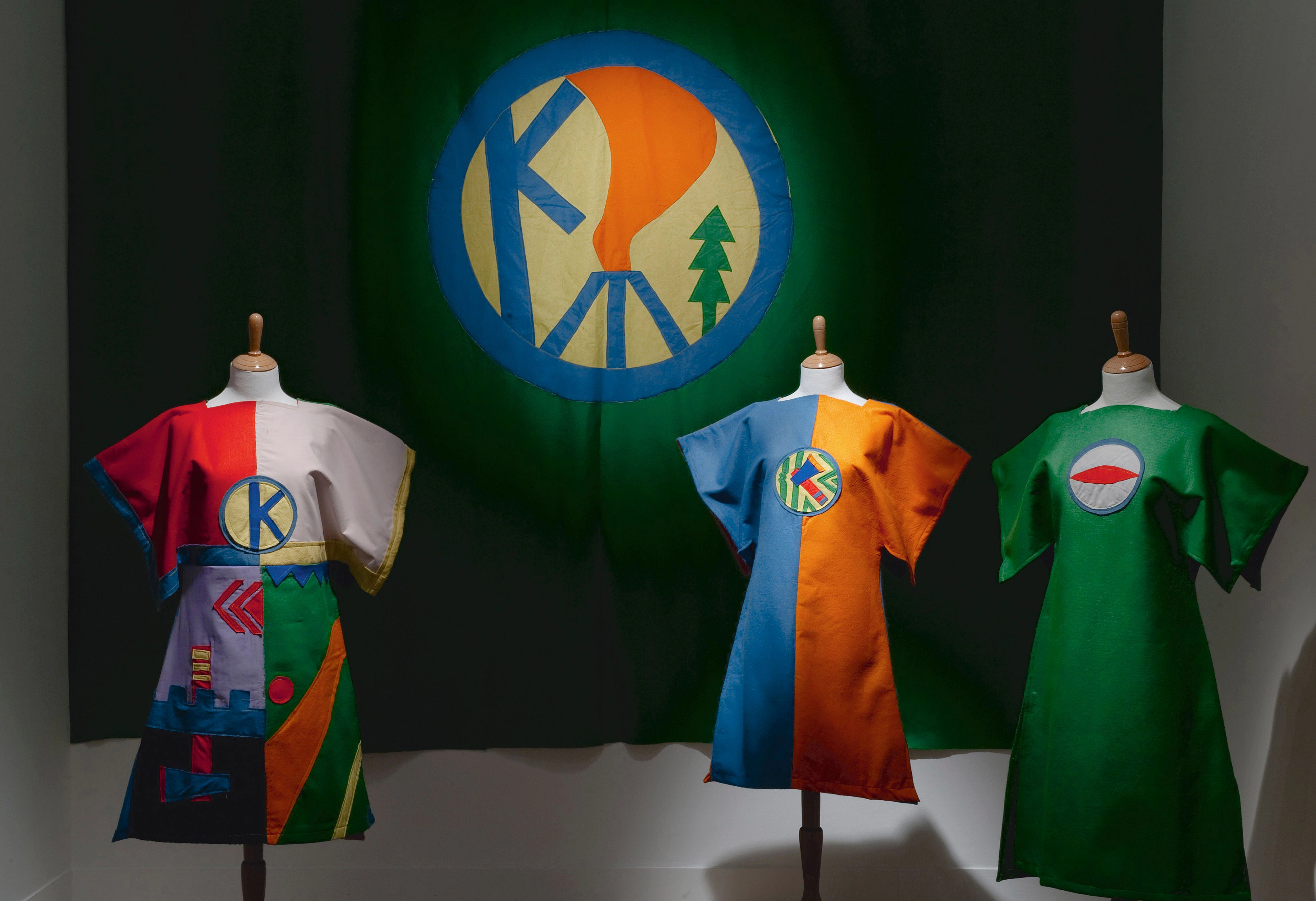
Machine Shall Be the Slave of Man, But We Will Not Slave for the Machine, 2009
installation view ‘Altermodern’: Tate Triennial, Tate Britain, 2009
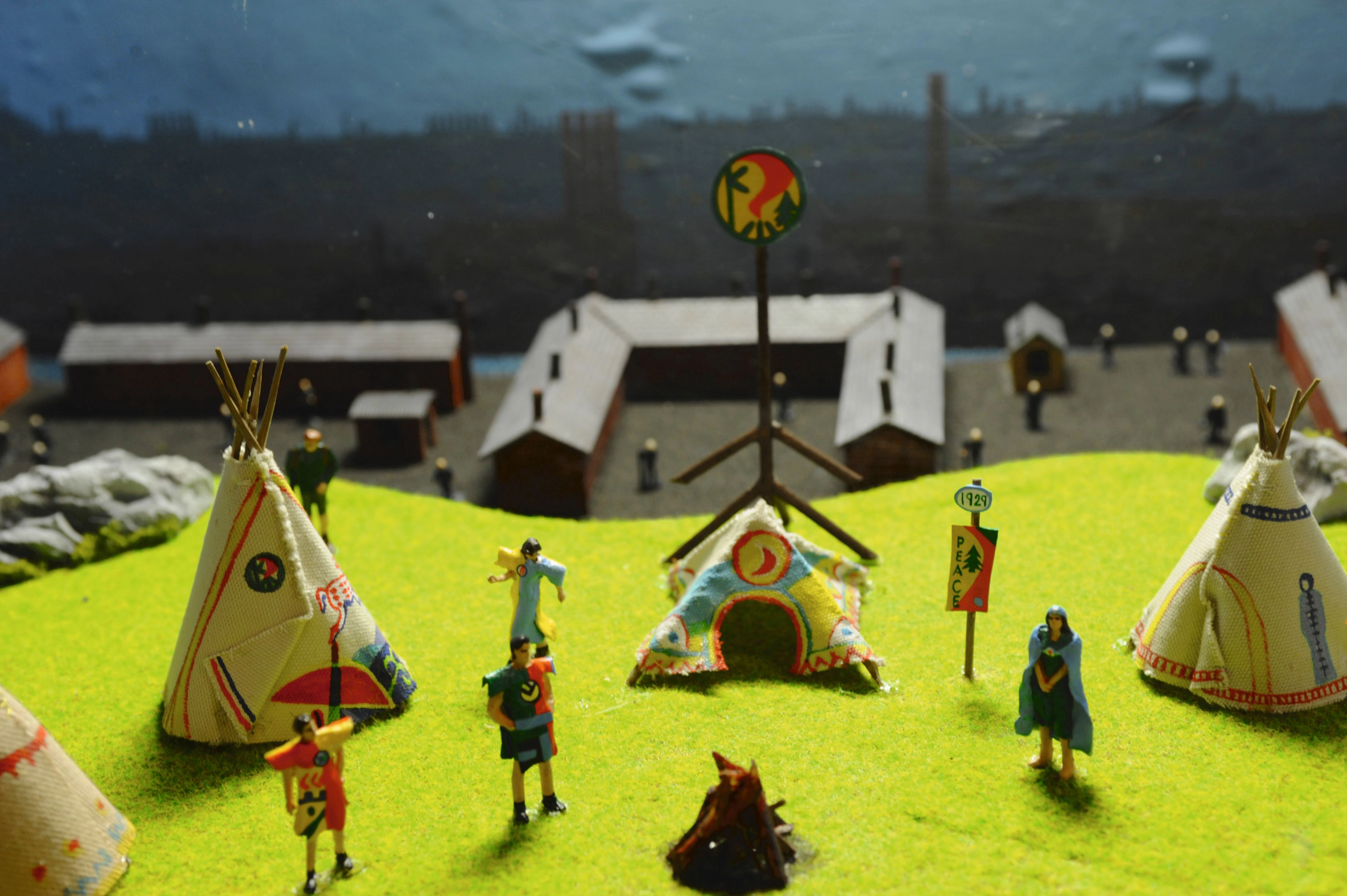
Machine Shall Be the Slave of Man, But We Will Not Slave for the Machine, 2009
installation view (detail), ‘Altermodern’: Tate Triennial, Tate Britain, 2009
Machine Shall be the Slave of Man but We Will Not Slave for the Machine interrogates the ways in which history can be instrumentalised for the sake of group identities. For example, the recurring fantasy of a golden age, which in the face of economic and social crisis can easily become a nationalistic idealisation of the past. The installation functions like a museum display, complete with a diorama, reconstructions of the Kibbo Kift’s costumes and banners and a workstation. A computer monitor plays a powerpoint lecture written as a personal travel log in 2007 and 2008 just as the financial crisis was unfolding, detailing the search for information about the little known Kindred of the Kibbo Kift and the Green Shirt Movement for Social Credit, as they became known in the 1930s. Despite the banking crashes of 1929 and 2008 having happened at different historical moments, the story is underpinned by the feeling that events are repeating themselves; as I attempted to access archives and contact former members and historians, each perpetuated a different version of this movement. The use of a first-person mode of address, in direct contrast with the supposedly objective language usual within museums, deliberately places the veracity of the story in question for the viewer.

Machine Shall Be the Slave of Man, But We Will Not Slave for the Machine, 2009
installation view (detail) ‘Altermodern’: Tate Triennial, Tate Britain, 2009

Machine Shall Be the Slave of Man, But We Will Not Slave for the Machine, 2007
detail of Social Credit diagram, ink on paper drawing

Bring Back Robin Hood, 2008
ink on paper drawing

Bring Back Robin Hood, 2008
ink on paper drawing
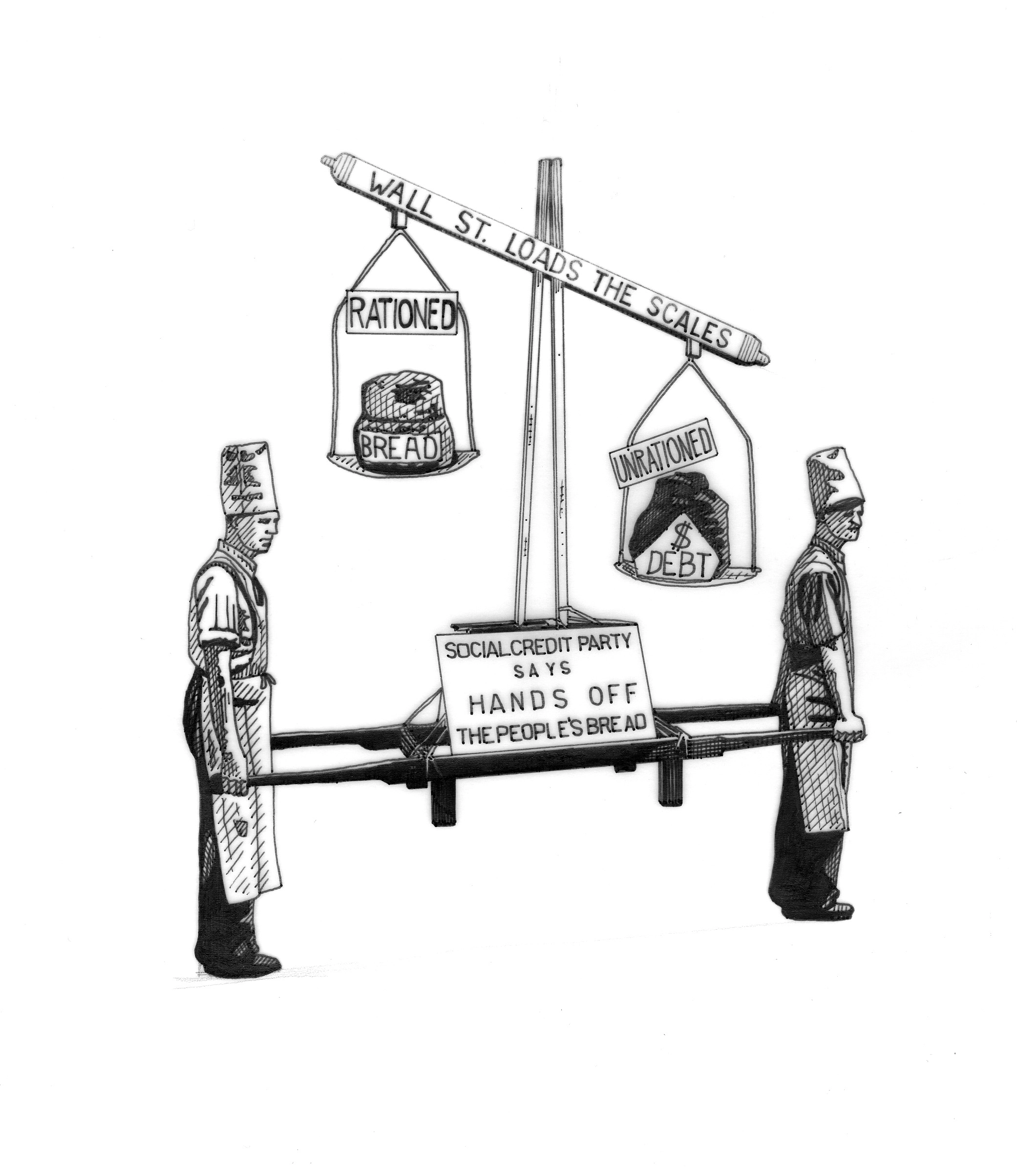
Bring Back Robin Hood, 2008
ink on paper drawing

Bring Back Robin Hood, 2008
ink on paper drawing

Bring Back Robin Hood, 2008
ink on paper drawing
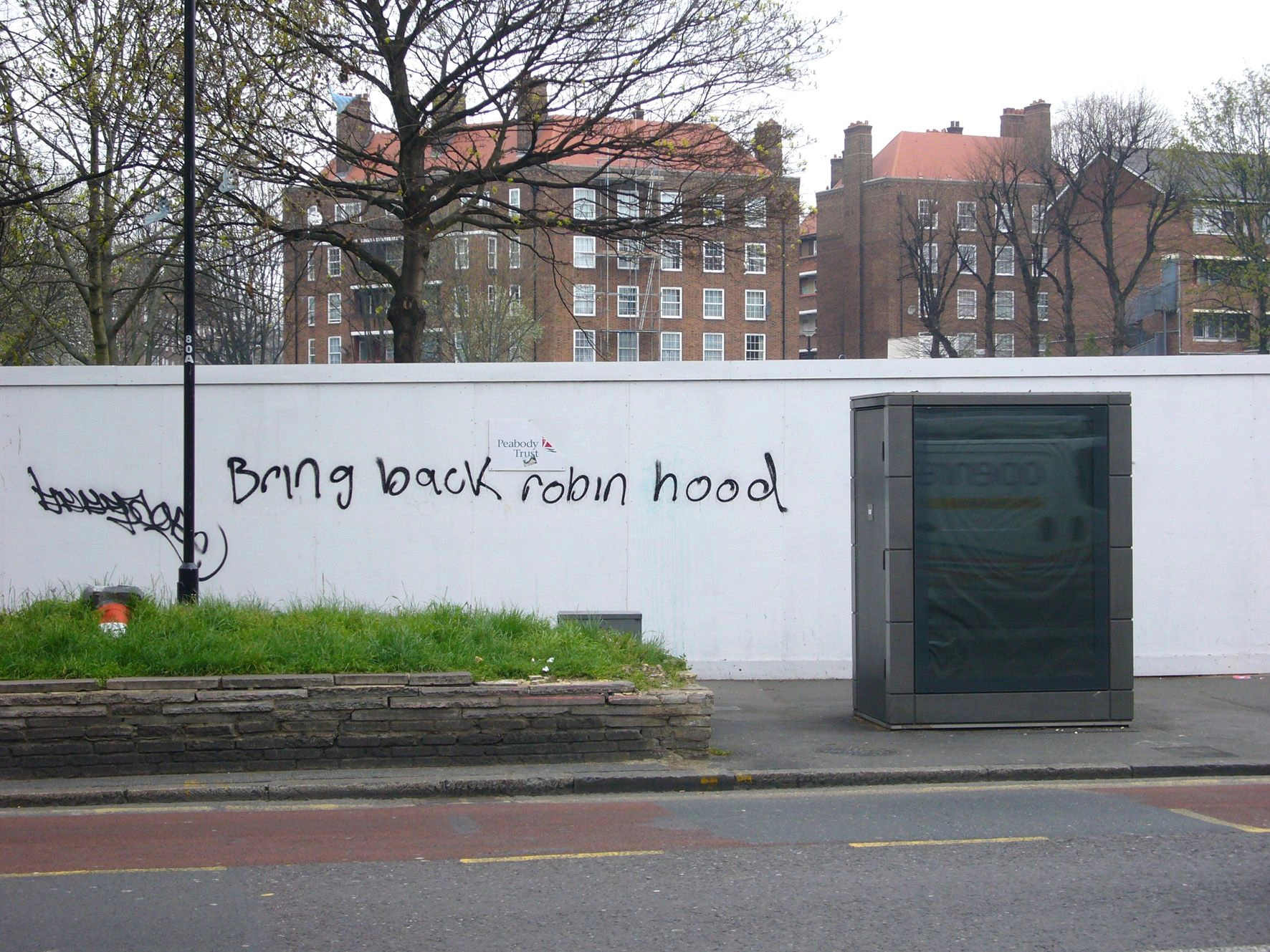
Machine Shall Be the Slave of Man, But We Will Not Slave for the Machine, 2007
video, 31 min. 27 sec., still
Further Reading
Artforum, Brian Dillon article on Olivia Plender, September 2011
(download)‘Altermodern’: Tate Triennial 2009 text by Olivia Plender, from the exhibition catalogue, published by Tate Publishing 2009
(download)‘Altermodern’: Tate Triennial 2009, Tate Britain, London
(view here)Frieze, ‘Bohemianism, grass-roots activism, urban regeneration and the voices of the dead’, Melissa Gronlund article on Olivia Plender, 2009
(read)On Curating, ‘The Modern Paradigm and the Exhibitionary Form: The Case of Altermodern’, Catalina Imizcoz, Issue 46 / June 2020
(read)